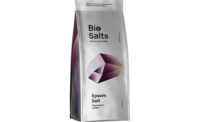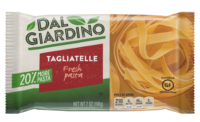Mastercard Lays Out Top 5 CPG Trends

In the next year, the consumer packaged goods (CPG) landscape will drastically change as brands evolve their strategies around digital channels, sustainability, collaboration and loyalty. Cutting across each of these initiatives is a need to innovate smarter and faster.
Some of the top traits found within leading innovative companies are speed, data-driven decision making, commitment from their leadership, an entrepreneurial culture, and a relentless focus on the consumer, according to Become 2020, a large research study by Harvard Business Review Analytic Services and sponsored by Mastercard. To successfully navigate tomorrow’s challenges, CPGs must work to foster these traits within their organizations.
Here are the top 5 CPG trends for 2020 and what brands can do to stay ahead:
1. CPG Brands Strategize Across Channels
Online CPG sales in the US have been increasing 30% year over year, and 60% of shoppers report having browsed or purchased CPG products online. While some brands have figured out how to sell direct, the majority of this growth comes from partners such as Amazon, Target and Instacart in the online grocery space.
To bolster performance and remain at the top of shopping lists, CPG brands are focusing on acquiring, engaging and retaining consumers across various channels. Companies, such as beauty brand Glossier, are using digital ads and buzzworthy pop-ups while others are experimenting across “new retail” platforms such as WeChat in China. With competitive pressures from niche upstarts and private label brands mounting, CPGs will have to double down on all paths to the consumer to win in 2020.
The necessity to compete in an ever-increasing number of channels means the success of CPG brands depends on continuously testing to understand cross-channel cannibalization and halo effects. Measuring all initiatives across channels will be crucial to ensuring marketing initiatives are truly increasing sales and loyalty.
2. Sustainability Sustains Profits
Focus is growing for sustainability as a priority for social good, as well as a tangible business driver. With 60% of consumers willing to pay more for sustainable brands, 40% of brand owners are prioritizing more sustainable packaging, such as Lavazza’s compostable coffee pods. Other brands, such as Bite Toothpaste Bits, are using online channels to sell niche sustainable products, while platforms such as Loop aim to reinvent packaging with re-usable, returnable containers. Interest extends beyond CPG brands, as well; investment management firm BlackRock partnered recently with the Ellen MacArthur Foundation to launch a dedicated fund to support the circular economy.
As sustainability and profit join hands under the umbrella of “doing well by doing good,” many goals, such as reducing food waste and eliminating excess transportation, are already aligned with business objectives in terms of efficient supply chain and inventory management. Sustainability will play a more prominent role in how brands think through product development, packaging, marketing, and more.
By incorporating sustainability goals throughout their organizations, brands can also better foster value-driven, emotional connections with customers to drive loyalty. Using a strong commitment to sustainability as a differentiating factor, established brands can better compete with private labels and upstart brands. Adapting not only products, but brand values to the evolving preferences of consumers will be key to succeeding in 2020 and beyond.
3. Collaboration Comes as Standard
Access to in-store and digital retail data remains a challenge that limits CPG brands’ abilities to expand personalization, loyalty and agile product development.
To adapt quickly to shifting consumer preferences and drive better performance, leading CPGs are integrating operations and analytical capabilities more closely with their retail partners. Such collaborative efforts have already been successful in bringing products to market 40%-60% faster. Moreover, brands such as Heineken have found success in utilizing collaboration to bolster not only brick-and-mortar sales but e-commerce as well through targeted marketing and promotions.
Instigating effective retailer–supplier collaboration can be challenging given latent tensions between the two parties. Success will come from alignment on key business goals and performance metrics, buy-in across both parties, a willingness to share relevant data, and a commitment to a common methodology for analysis and improvement. As data-sharing and analytical tools become more advanced, CPGs should ensure they are well-positioned with retailers to develop, execute, and analyze joint initiatives.
4. M&A Fuels Innovation
The number of mergers and acquisitions are at a historic high in the CPG space, increasing 30% since 2013.
In May 2019, Edgewell Personal Care followed several high-profile acquisitions when it bought Harry’s — known for its subscription shaving model. It shows the major shift in how established CPG brands are approaching mergers and acquisitions, from a focus on growing scale to a targeted search for expertise in areas like subscription services and success in online channels. By acquiring successful direct-to-consumer brands, or brands positioned for sustainability, CPGs are seeing greater success in growing their capabilities and spurring innovation.
The ability to look beyond internally generated insights for greater context will be critical in evaluating potential acquisitions. To that end, CPG brands will benefit from rich consumer spend and sector insights. With a view into how different generations are spending across categories and channels, CPG companies can gain a greater macroeconomic context and better inform acquisition strategies.
5. CPGs Focus on Margin Expansion
Rising competition and evolving market dynamics are driving CPG brands to scrutinize costs while searching for opportunities to grow their topline.
More productive and diverse data sources mean today’s CPG brands have a wider range of analytical and benchmarking tools at their disposal. CPGs are finding success by rapidly testing new pricing strategies to understand consumer elasticities and potentially offset commodity costs. Similarly, many brands are analyzing the effectiveness of retail servicing levels or trade promotions to drive significant savings.
However, CPGs must be surgical when changing prices and cutting costs, ensuring that new initiatives minimize any potential downsides to market share or customer loyalty. Understanding consumer elasticities, and identifying the right areas to cut costs, will be the key to boosting performance and expanding margins in 2020.
To learn more about Mastercard’s work with CPGs, visit mastercardservices.com/en/cpg or reach out to your account representative for more details.
Looking for a reprint of this article?
From high-res PDFs to custom plaques, order your copy today!






